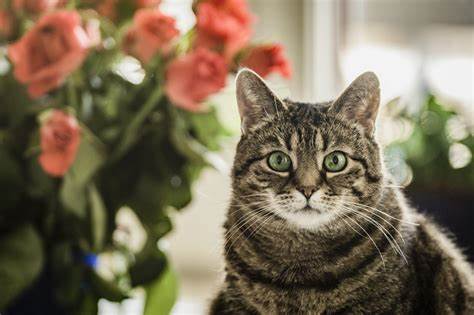Are Lilacs Poisonous To Cats?
While the common lilac plant (Syringa vulgaris) is neither toxic or dangerous, eating it or its components may cause stomach and digestive problems in animals. Although lilac is not frequently included on lists of plants that are toxic to cats, certain lilac species are. Depending on how much lilac your cat ate, it might result in severe disease. Cats are naturally curious creatures. Anything new in their surroundings, even flora, piques their attention. Cat poison may be found in a variety of common plants and can harm your cat. Although some lilac varieties are toxic to cats, the lilac plant is not often listed on lists of plants that are toxic to cats.
Are Lilacs Poisonous To Cats?
While lilac is not often found among the plants deemed hazardous to cats, certain lilac species are dangerous to cats. Okay, the plant may not harm your kitty companion. However, depending on how much lilac your cat swallowed, it might cause serious sickness.
Is Lilac Attractive to Cats?
As previously stated, some lilac species may be poisonous to your cat. But, before we get into the toxicity of lilac for cats, it’s crucial to understand what cats find appealing about lilac.
Symptoms of Lilac Poisoning
Although common lilacs are non-toxic to most animals, they are not edible, and plant material intake may induce gastrointestinal discomfort in many animals. If you suspect your pet has consumed plants, contact your veterinarian immediately to see if they have consumed anything hazardous.
How Common Are Lilacs Poisonous To Cats?
Lilac bushes are thought to be the safest plants for any kind of animal, including cats and dogs. Syringa vulgaris, or common lilac, in particular, is one of the lilac flowers that is known to be safe from its roots to its stems and leaves, and the many hues, including the purple, blue, pink, and lavender blooms, are all safe as well. Although the ordinary lilac, Syringa vulgaris, is a non-toxic plant for cats, the French lilac or Persian lilac, also known as Melia azedarach, is a kind of lilac that is considered harmful to animals.
Which Lilacs Are Toxic to Cats?
French Lilac
French lilacs are one of the most unusual lilac varieties. They only bloom for a few weeks each spring and summer. Galegin, a neurotoxic and hypotensive chemical that is particularly dangerous to cats, is present in them. Ingesting this drug may cause a number of issues, including pulmonary edema, hydrothorax, and even death.
Persian Lilac
Persian lilacs, sometimes known as chinaberry trees or white cedar, are smaller than their common siblings, standing only around 8 feet tall. Melia toxins A and B are discovered in Persian lilac seeds, which explains why the shrub is harmful to cats. Poisoning symptoms include vomiting, diarrhea, drooling, tremors, and muscle spasms.
Common Lilac
This is the lilac plant, Syringa vulgaris, that you’re undoubtedly familiar with. This lilac variety is quite frequent. Prevalent white lilacs are the least hazardous to cats, which is fortunate considering that they are the most common lilac kind.
What Should I Do If My Cat Is Sick After Eating Lilac?
Symptoms of poisoning should be reported to your veterinarian as soon as possible. Your pet has the best chance of survival if you get care as soon as possible. We strongly advise you to call your veterinarian as soon as possible. Your cat may recover if she receives therapy as soon as possible.
Are Lilac Leaves Toxic?
Cats are poisoned by lilac leaves. Plant poisoning in cats causes vomiting, lethargy, diarrhea, and convulsions.
Are Lilac Stems Poisonous?
While lilac petals aren’t always poisonous, the stalks are more likely to choke you. Cats should avoid chewing lilac stems as a consequence.
Conclusion
Common Lilacs are not harmful to cats, so there’s no need to be concerned if you have these lovely towering plants in your yard. Pick a few little branches to bring inside to decorate your house and fill it with the lovely smell that lilacs are famous for. Just be aware that Persian Lilacs that are smaller than the typical kind are harmful to cats. There are many gorgeous cat-friendly houseplants to have around your home, so explore the options and enjoy the best of nature!








